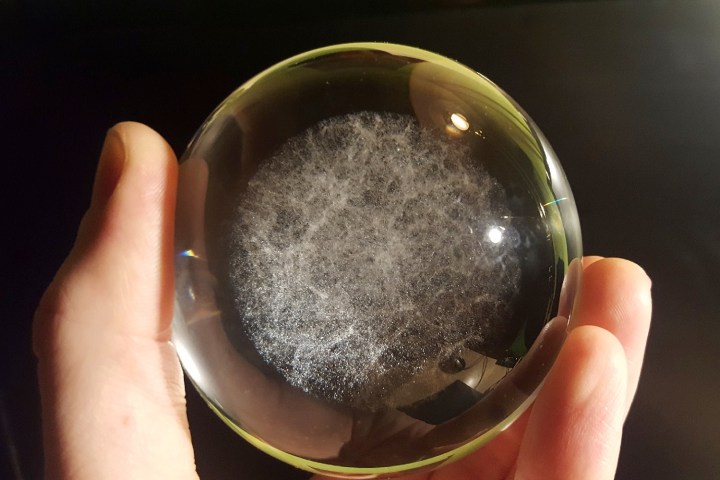
If that scene stuck with you the way it has with us, you may appreciate a new Kickstarter project called — with a minimum of fuss — “The Universe in a Sphere.” In essence, it’s what it says on the tin: a glass sphere, containing a hyper-detailed 3D representation of not just our own galaxy, but a hefty chunk of the observable universe as we know it.
For those keeping track at home, that’s a whole lot of stars.
“What I did was is to take a catalog of galaxies, including our home supercluster called Laniakea, converted the XYZ coordinates and selected all of the 675,758 galaxies in a radius of 125 megaparsecs,” creator Clemens Steffin told Digital Trends. “One megaparsec stands for about 3.2616 million light years, so the cloud in my glass sphere represents a diameter of 815,400,000 light years.”
Steffin next searched for (and found) a company capable of lasering in each one of these 380,000 dots, each representing an entire galaxy, into a glass sphere. After that, he launched his Kickstarter.
“When you realize that there are so many galaxies that they themselves start to form moving structures that appear like natural beings of their own, you stare into the sphere and can’t help but realizing how tiny you are in the face of these enormous structures,” he continued. “You start wondering whether these could form even larger structures. You open your mind up to the stupendously gigantic dimension of our universe before you realize that this sphere only represents 0.0000675 percent of the observable universe!”
So what exactly do you do with this object once you receive it? “A beautiful way of displaying the sphere is to illuminate it,” Steffin said. “I hope that many backers build or buy themselves rotating LED stands that can project the inner structure of the sphere onto a wall. I imagine, however, that most backers will be happy to just lie on their beds, staring into the sphere, wondering how many beautiful wonders may await us in such a vast universe.”
Steffin’s Universe in a Sphere is available for pre-order, with a single unit costing starting at $41.50.
Shipping is set to take place in February — or, to put it in universe terms, a tiny, tiny fraction of the blink of an eye.


